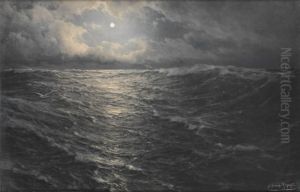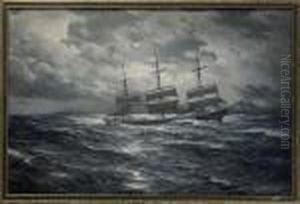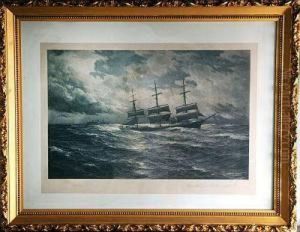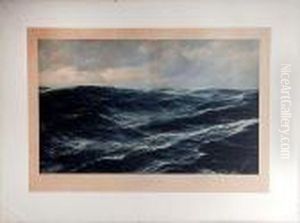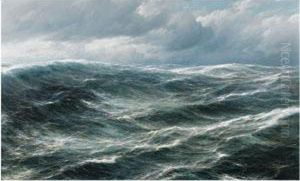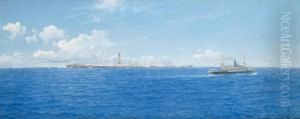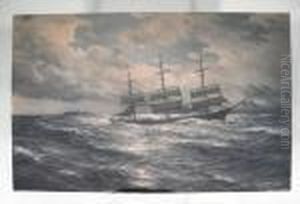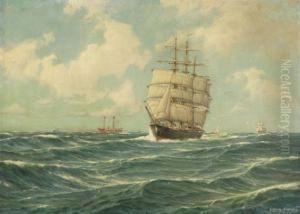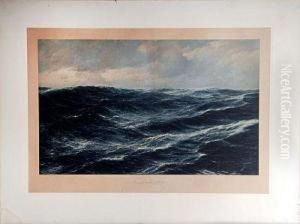Hugo Schnars-Alquist Paintings
Hugo Schnars-Alquist was a German painter, primarily known for his marine landscapes and his contribution to the development of German maritime art in the late 19th and early 20th centuries. Born in Hamburg, Germany, in 1855, he grew up in an era when Germany was undergoing significant cultural and industrial changes. Schnars-Alquist showed an early interest in art, motivated by the vibrant maritime environment of his hometown, which would later deeply influence his artistic direction.
He embarked on his formal art education in Germany and continued his studies in various parts of Europe, which was a common practice among artists of his time seeking to refine their techniques and gain broader perspectives. Throughout his career, Schnars-Alquist was particularly fascinated by the interplay of light and water, which became a hallmark of his work. He captured the majesty and dynamism of the sea, from calm harbors at dawn to tumultuous ocean waves under stormy skies.
Schnars-Alquist's contributions to art were not limited to his paintings. He was also involved in the art community as a teacher and mentor, helping to inspire the next generation of German artists. His works were exhibited widely in Germany and abroad, earning him recognition and accolades. Despite this, he remained dedicated to his craft rather than seeking fame, focusing on capturing the essence of the maritime scenes he loved.
His style evolved over the years, incorporating elements of Impressionism and Realism, reflecting the broader trends in European art of the period. However, he always maintained a distinct personal touch, characterized by meticulous attention to detail and a deep understanding of the sea's moods and colors.
Hugo Schnars-Alquist passed away in 1939, leaving behind a rich legacy of marine paintings that continue to be celebrated for their beauty and technical prowess. His work provides a window into the maritime culture of his time and remains influential in the field of marine art. Schnars-Alquist's dedication to his subject matter and his skill in depicting it have cemented his place as a significant figure in the history of German art.


